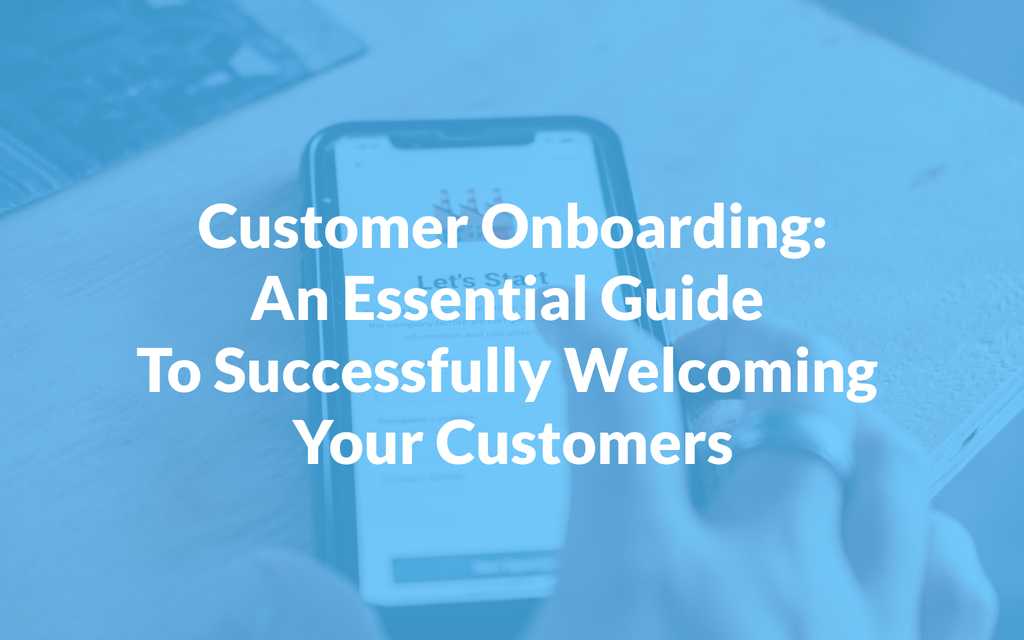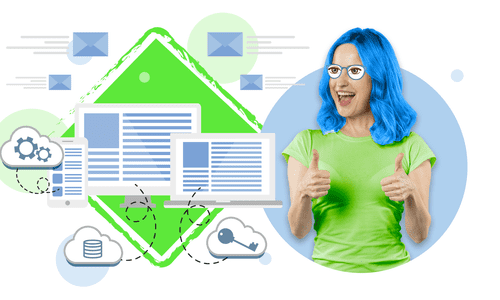You know the old saying about how you never get a second chance to make a first impression?
While it was probably not meant to be used in marketing and sales pipelines, it is incredibly applicable, and customer onboarding is a good example.
Successful customer onboarding is a key component of excellent customer experience and the foundation of a future relationship between that person and your brand.
It’s like going on a first date – you did a good job so far, which deserved you a chance to meet with someone in person. Now you need to show that it’s more about your advanced Instagram filter game and epic stories. The product itself (you!) is what it was all about from the start!
This article will help you develop an outstanding customer onboarding experience that will improve satisfaction and reduce future support time. We will tell you about the importance of customer onboarding, give you tips on how to improve it, and explain how Customerly can help you make the whole process smoother for both sides.
Understanding the customer onboarding process
Before we dig into the tactics, let’s first explain the purpose and importance of the customer onboarding process.
Explanation of the steps involved in customer onboarding
While each business is unique, and there are differences between all of the products and services you provide, here are some of the steps involved in client onboarding:
Immediate post-sales help
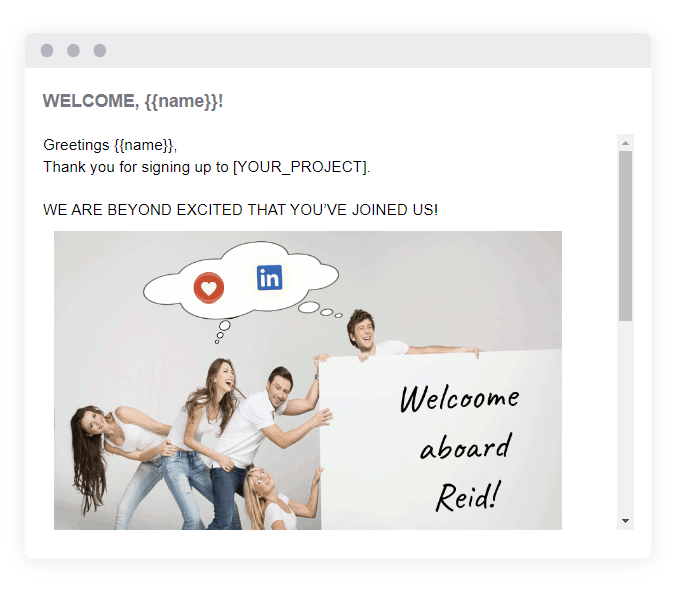
If the sale was made during a live session with one of your agents, they should immediately offer help to customers to get them started. This is usually aiding them in creating an account or explaining how the most used product features work.
But you can also send this automatically via email. Include useful resources and use cases, but also pre-recorded webinars that will walk them through the product.
Introduction to the product they just bought
The idea of this step is to ease the customer and get them familiar with their new purchase. Usually, if we are talking about a digital product, this step consists of a simple tutorial that introduces customers to the interface and shows them where they can click to get more help.
If you want to take it a step further, a knowledge base is the right thing to do. It will help customers find their way once they start using your product and proactively answer future questions they might have.
Offering easy-to-reach help
No matter how good you are at creating tutorials and knowledge bases, not everyone has the technical knowledge or is willing to solve problems on their own. Make it easy for customers to contact your support agents via chat, email, or phone.
If you really want to stand out, implementing video chat with screen sharing is the way to go. Through it, your agents will be able to aid customers directly, even in the most technical tasks that would be hard to explain otherwise.
Following-up
It is a good idea to follow up with your new customers after a week and ask them if they need additional help. You can use that email to send them handy resources that will further familiarize them with their new purchase. This follow-up process can be enhanced through the use of automated workflows, ensuring consistency and efficiency in customer outreach.
Asking for feedback
Even though collecting customer feedback is important on its own, it also plays a role in client onboarding. Existing customers will know you care and won’t have anything against you asking for their opinion. Plus, it will give you an opportunity to solve some of their problems, improving the experience overall.
Additionally, incorporating a post-onboarding in-app survey to measure the customer effort score can provide valuable insight into the overall onboarding process and help identify areas for improvement. This can also help reduce churn by proactively addressing any pain points and demonstrating a commitment to customer satisfaction.
Importance of understanding the customer onboarding process for effective implementation
To effectively implement customer onboarding, you should focus on a few areas you would want to improve. These can be:
- We want to reduce the agent support time spent on newly acquired customers.
- We want to improve customer retention rate.
- Our goal is to minimize customer churn over a six-month period.
- We would like to see better product adoption.
- We aim to improve customer feedback and the number of positive reviews we get on Trustpilot.
If you create measurable milestones, you will be able to determine the next best step and allow you to measure the effectiveness of your actions later.
Implementing customer onboarding
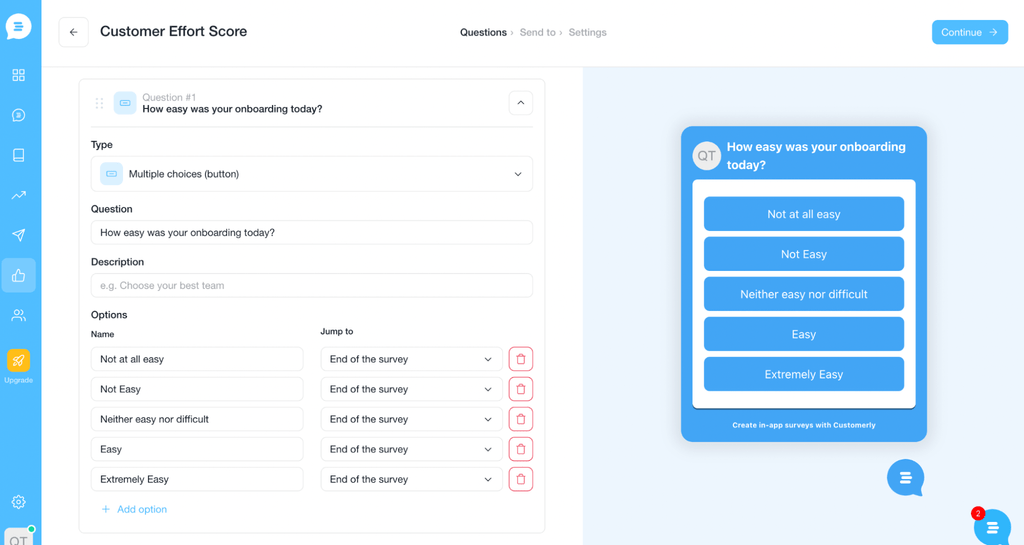
Now that we covered the basics of the customer onboarding process and its importance let’s dive deeper into the more practical advice, helping you create and execute a sound customer onboarding plan.
Creating a customer onboarding plan
Depending on the product or service you offer, your customers will require a different approach. But, any customer onboarding plan should cover these steps:
- Set a clear objective: while customer onboarding on its own will improve satisfaction, you should set up some parameters that will help you measure customer success. This can be anything from reduced churn, improved customer retention rate, and better feedback.
- Pick the best customer onboarding methods: depending on the situation, something as simple as helping the customer create an account might actually be the right thing to do. But, depending on your product, you might need to create webinars and step-by-step tutorials. Incorporating in-chat triggers that offer onboarding video tutorials or resources can provide a personalized and interactive experience, making the onboarding process even more effective.
- Start collecting materials and documenting processes: creating a knowledge base takes time and is something that is impossible to force and do in one go. Creating materials and collecting information on the go as you manually onboard customers is a much better idea. Write down questions your agents get, and leave them in the FAQ section on your site.
- Work on automation: it is needless to say that you should eliminate all the redundant and repetitive tasks and replace them with automation whenever possible.
- Listen and improve: pay attention to what customers say and ask, and collect feedback. There’s always room for improvement!
Using a customer support tool to automate and streamline the process
While having a plan is important, an advanced customer support and satisfaction solution such as Customerly is what will turn your customer onboarding strategy into reality.
Tools will speed up the process of creating knowledge bases but will also give you plenty of templates you can edit to create autoresponders and canned responses.
Better tools also keep everything centralized in a single place, so your agents only need to use one app for any support channel. That will prevent wasting time and allow quicker support, which is one of the fundamentals of customer happiness.
Providing personalized communication and support
While automation will save time, you should still ensure each customer gets personalized support whenever they hit a wall. This can only be done if you give them enough ways to contact your agents.
Besides offering them the usual email and chat support, providing them with a telephone number or, even better, a way to contact your agents via video chat is a good idea. That way, they will not waste time explaining a problem they can’t understand, which will cut support times and improve satisfaction across the board.
Measuring and analyzing customer onboarding effectiveness
Implementing any kind of customer onboarding is undoubtedly better than having none. But, once you start working on the processes, it is crucial to keep track of things to ensure you are going in the right direction.
By tracking the goal percentage and results from the onboarding workflow sequence, you can monitor the success of your processes and make data-driven improvements to continuously enhance your customer onboarding experience.
Customerly team reports are an effortless way to monitor how well your agents’ activities are going and to see where you need to improve. Detailed analytics will highlight the strengths and weaknesses of your reps and will help you make better organizational decisions across teams.
Additionally, customer satisfaction regarding the onboarding process can be tracked using the in-app survey dedicated to tracking the Customer Effort Score (CES). This valuable feedback helps you understand how well your onboarding processes are resonating with your customers, so you can make necessary adjustments and provide a seamless experience.
Benefits of effective customer onboarding
If you are still not sure whether spending time on developing customer onboarding for your company is a good idea, here are some benefits that will help you change your mind:
Increased customer satisfaction
Not knowing what to do next after the purchase is super annoying and is precisely what good customer onboarding directly tackles.
Plus, if you do things right and create a knowledge base, users will be able to access information at later stages and refresh their memory without waiting to get in touch with one of your agents.
That means that customer onboarding will reduce support time, too, resulting in other customers having to wait for less to get support, creating a virtuous cycle and significantly improved satisfaction.
Improved customer retention
Satisfied customers that know exactly how your products can benefit them are less likely to leave. That means customer onboarding is a direct way to reduce customer churn.
Plus, the customers that decide to leave due to not knowing what to do with your product tend to leave angry reviews. Reducing churn by implementing customer onboarding will also reduce the number of that type of negative reviews.
Increased revenue and sales
Customer lifetime value is one of the most important metrics, and if customer onboarding is a way to improve it, then you should start working on it now. With less churn and more loyal customers, your cash flow will improve significantly, as you will be able to retain customers for longer. Also, the longer they stay subscribed, the more chances you will get to offer additional purchases or upsells, meaning more revenue.
Enhanced brand reputation
Customer onboarding shows buyers that you care, even after you close the deal. For that reason, it significantly improves how customers perceive your brand, which pays dividends in the long run.
On its own, satisfaction is one of the most vital brand signals and is something that doesn’t go unnoticed. If you take good care of your customers, positive reviews across the internet will testify to that. That improved brand recognition will draw in more potential customers.
Best practices for customer onboarding
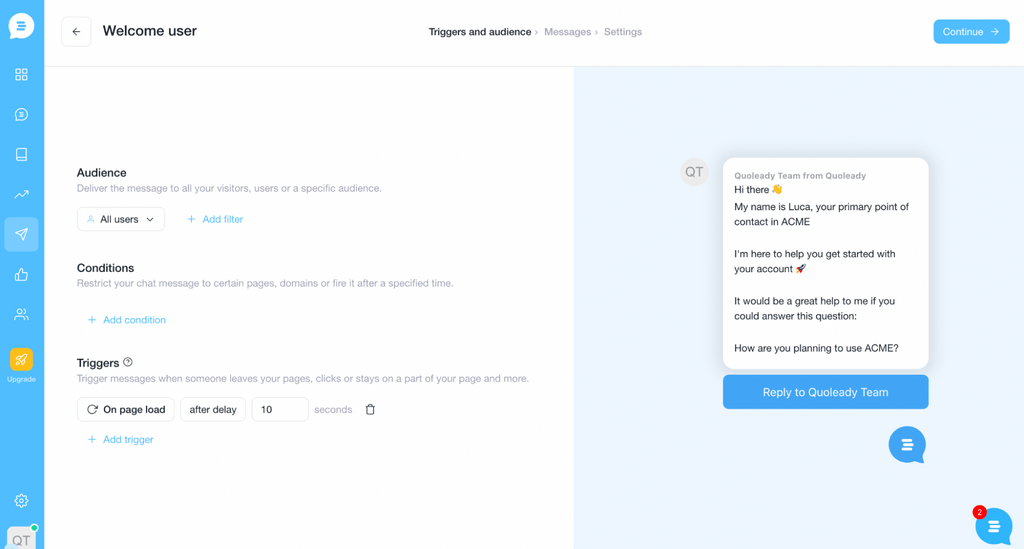
Here is a short customer onboarding checklist that will help you make a successful onboarding process:
Providing a seamless and consistent onboarding experience
The onboarding process starts from the moment the customer lands on your landing page. The onboarding experience should continue from there, starting the moment the customer makes a purchase. This could be during the sales call, immediately after they receive a confirmation email, or after they sign in for the first time.
However, it’s important not to stop there. Whenever your customers need help, it should be a few clicks away. To achieve this, building a knowledge base, recording tutorials, and providing multiple support methods is crucial.
Prioritizing customer onboarding and providing rapid support
While any kind of support is important, good customer onboarding can actually reduce the need for future support. This is the reason why you should prioritize it, as it will save your agents time from future tickets.
Collecting and using feedback for improvement
While you can collect indirect data through user onboarding, asking loyal customers for direct feedback is very important. They will not only tell you about their experience but might unlock new ideas you didn’t think about before, speeding up the process.
The bottlenecks of customer onboarding
While customer onboarding is important, implementing it can be difficult. Here are some common bottlenecks of the customer onboarding process:
Setting unreasonable expectations
If your marketing and sales teams set unreasonable expectations just to close a deal, no onboarding in the world can overcome it. But, as long as you don’t try to trick customers into buying, a good onboarding process can help and explain how to use your product to achieve what was promised to them.
Nevertheless, you should streamline your sales and marketing process and ensure that you can actually deliver what you promise, as that is the best way to have satisfied and returning customers.
Creating knowledge bases takes a lot of time
Creating an extensive knowledge base takes time, which is why many businesses procrastinate on this and waste countless hours answering tickets. But those tickets are exactly the material you should collect for your knowledge base. In 2022, the users of Customerly managed to avoid +1,687,884 tickets, resulting in $11,815,188 in saved costs thanks to the customer support automation and knowledge base articles.
Whenever you notice that customers complain and ask about the same issue, format it and put it in your FAQ section. Gradually, as those questions build-up, you will be able to systematize everything and create a full knowledge base without spending too much time.
Staying consistent and providing ongoing support is not easy
The initial customer onboarding process is just the first step – your job is to stay consistent and continue offering support to customers.
To do this, you can create automated workflow sequences and send new information to customers periodically.
Also, you can create surveys and ask customers for feedback, which will uncover potential problems and give you more ideas on how to improve your products.
Analyzing the results can be problematic
Support teams often find it hard to draw conclusions from the customer information they collect. But, unless you put it into action, all the data you accumulated is useless.
To get the most out of your procedures and the customer onboarding process, it is essential to set clear and measurable goals. You should also use customer support tools that have built-in analytics, as it will help you make changes on the go.
Budget and scaling difficulties
If not done right, the onboarding process can actually increase support time. That’s because it can lead customers astray, making them contact your agents to solve problems they wouldn’t otherwise have.
It is best to create knowledge bases and use automation to prevent this. That way, your initial time investment will pay itself off over and over again as time goes by. Plus, automation will recommend answers to customers before they open a ticket, resolving many issues before they end up on your agents’ to-do lists.
Why choose Customerly as a perfect customer onboarding tool?
We have mentioned briefly why customer service tools are essential for creating a fantastic customer onboarding process experience. Now, we are going to show you why Customerly is THE tool to do it with:
Create a powerful help center with ease
Customerly is a perfect app for creating a knowledge base. This alone has the potential to save hundreds of hours of agent time that would otherwise go wasted answering needless tickets.
Use customizable chat templates
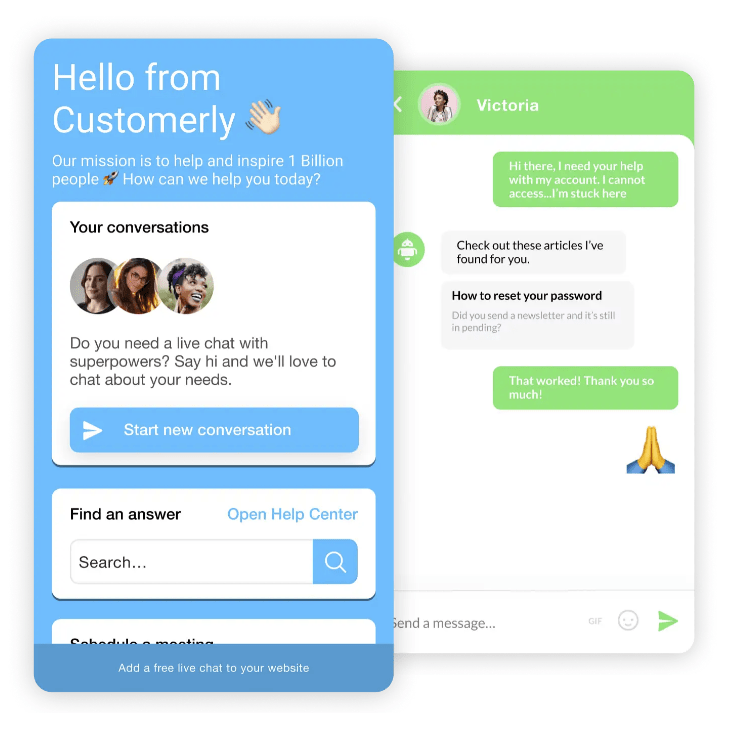
Customerly does an excellent job with live chat support, as it allows you to create live chat templates for different user groups.
This will face new customers with FAQs, cutting support time.
Collect feedback on the go
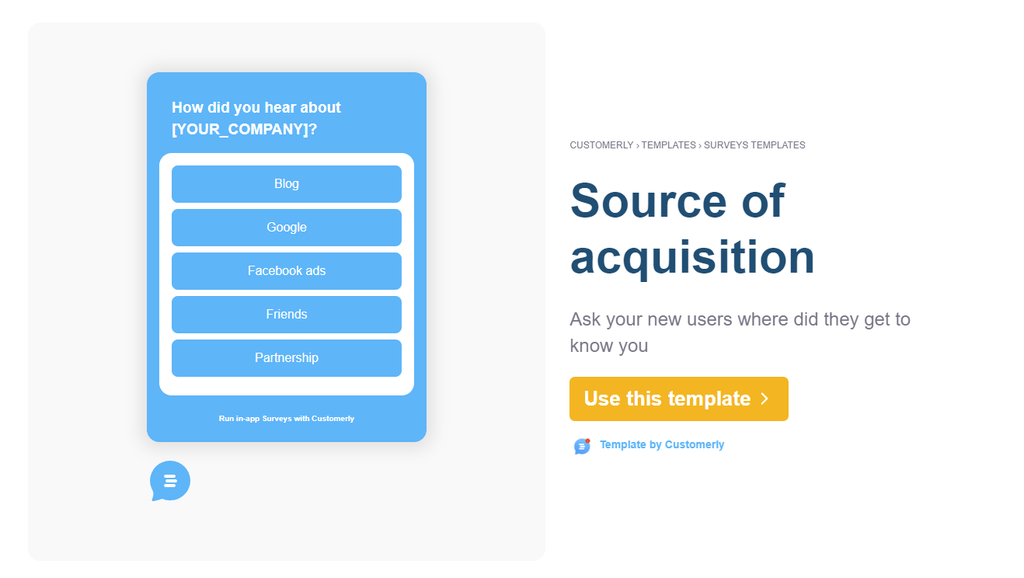
With Customerly, you will be able to automate and easily collect user feedback and improve your processes, resulting in skyrocketing satisfaction.
Use video chat to improve support quality
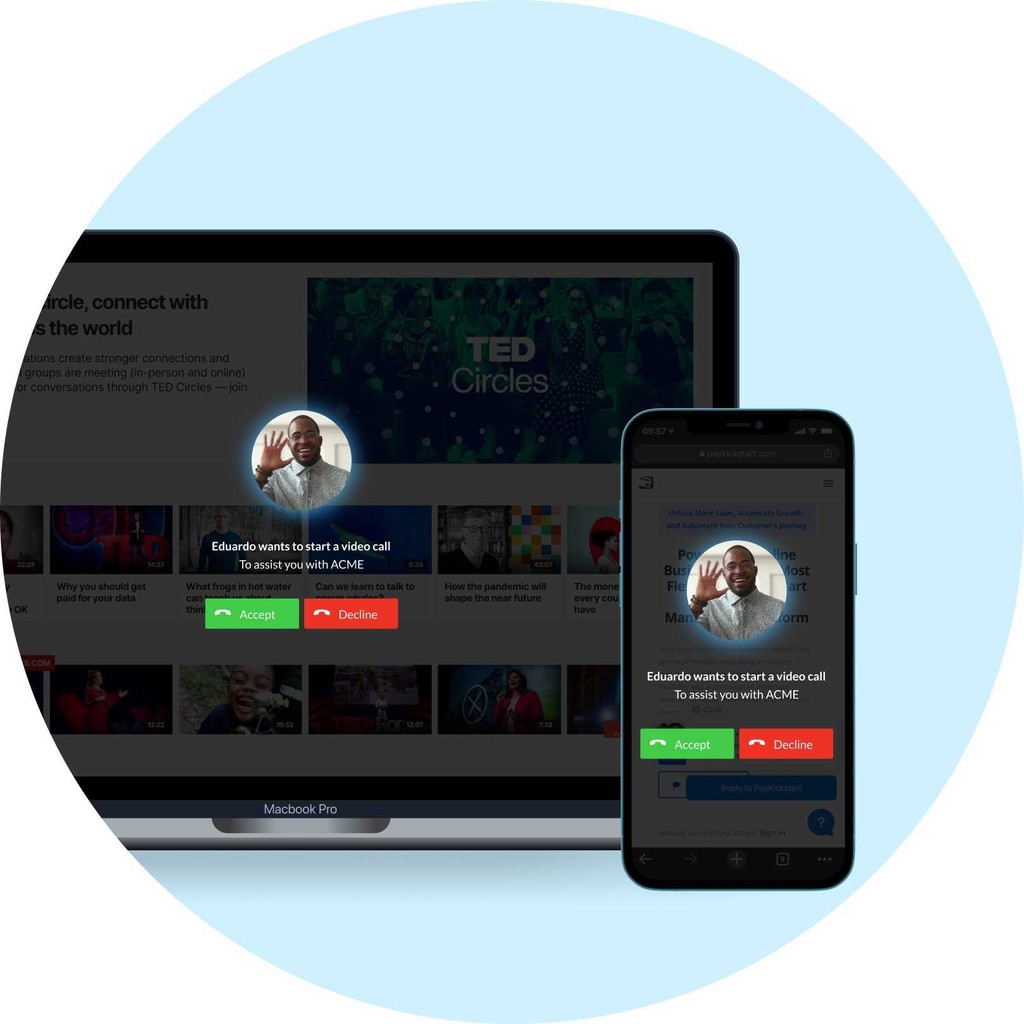
Text chat is great, but if you want to make an impression and help customers quickly and efficiently, Customerly’s video chat with screen share is the way to go.
This feature will not only save countless hours as your agents will be able to show customers what to do, but it will also save customers’ time. Plus, nothing is more annoying than trying to explain via chat something that you don’t know how to do. Typing takes time, and not all customers are tech-savvy, which often results in even more problems if agents cannot understand the situation.
Screen sharing and video chat eliminate this completely – an agent can show customers what to do and where they need to click to solve the issue without getting into any technical details.
A single dashboard for effortless communication across channels
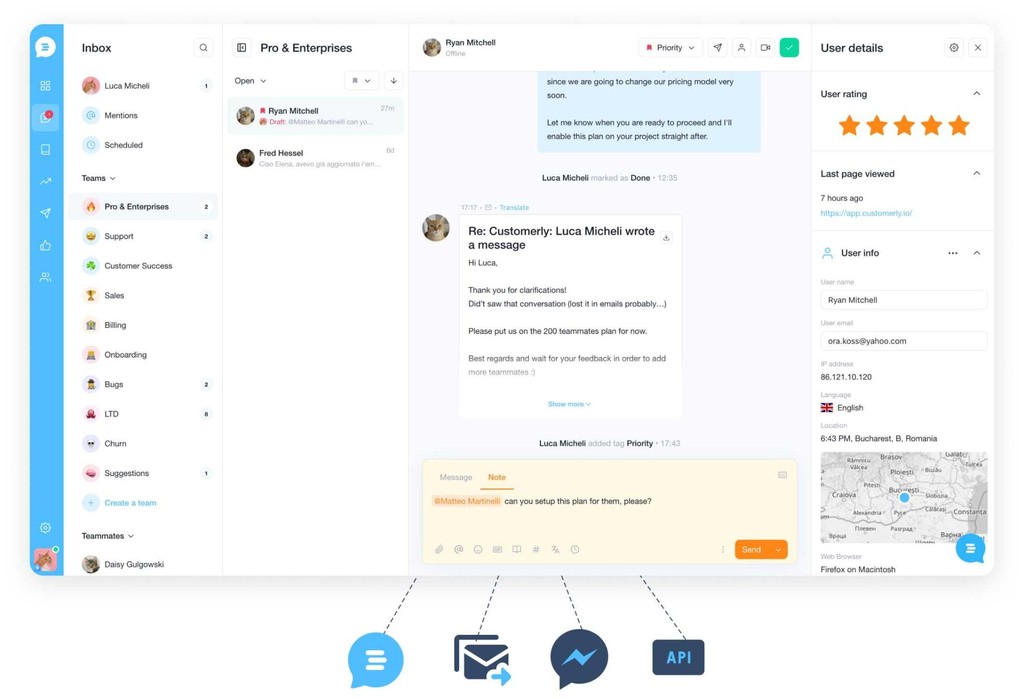
While offering customers different contact options is a good idea, it is even better to streamline all of those channels to a single inbox. Customerly does precisely that, allowing your agents to have a bird’s eye view of all of their conversations from a single dashboard.
Plus, Customerly allows you to split communications between different teams and channels but also assign appropriate colleagues to the case, ensuring the right colleague is working on the issue.
Additionally, the Customerly dashboard is fully integrated with the knowledge base and support articles, allowing agents to provide personalized, professional and swift help, leaving customers amazed.
Conclusion
As you can see, customer onboarding is an incredibly important tool in your overall customer experience efforts. If you do it the right way, you will significantly improve customer satisfaction, empowering multiple areas of your business – ROI, cash flow, reduced customers churn, and brand recognition.
Customerly is a perfect partner to help you create and implement a customer support strategy across your whole business, including onboarding. Sign up for a free trial now, and see why almost 30.000 companies trust Customerly as their go-to customer support app.
FAQ
The customer onboarding process represents the efforts you make to ease a new customer into the product or service they just purchased. It can be something as basic as providing assistance and helping the user create an account, all the way to advanced tutorials explaining some complex functions.
The best way to organize a successful customer onboarding process onboard will depend on the situation. For example, if your agent made a sale during a call, they can immediately continue and explain to the customer what to do next. For digital services, sending information via welcome email and creating a knowledge base is always a good idea.
Support and sales agents are usually in charge of the customer onboarding process, but it can also be the responsibility of another member of your customer success team. But, if done right, a lot of it can be automated using customer onboarding software such as Customerly.
Some of the onboarding examples include:
Onboarding calls: your sales agents can jump straight to onboarding during a call and explain to customers the account setup process and how to start using your products.
Welcome emails with useful resources: the first email you send to customers after they sign up should contain helpful information and additional resources if they want to learn more about their purchase.
Tutorials and walkthroughs: it is a good idea to create at least basic video tutorials and walkthroughs that will introduce customers to the interface of your products and their basic functions.
Knowledge bases and FAQs: a knowledge base systematizes FAQs, tutorials, manuals, and any other information about your product or service, culling an enormous amount of support time.
Agent-led support and instructions: lastly, customers should always be able to contact a support agent and get live help. For this purpose, video chat works best, as screen sharing eliminates the need for explaining, as the agents can demonstrate what needs to be done.
